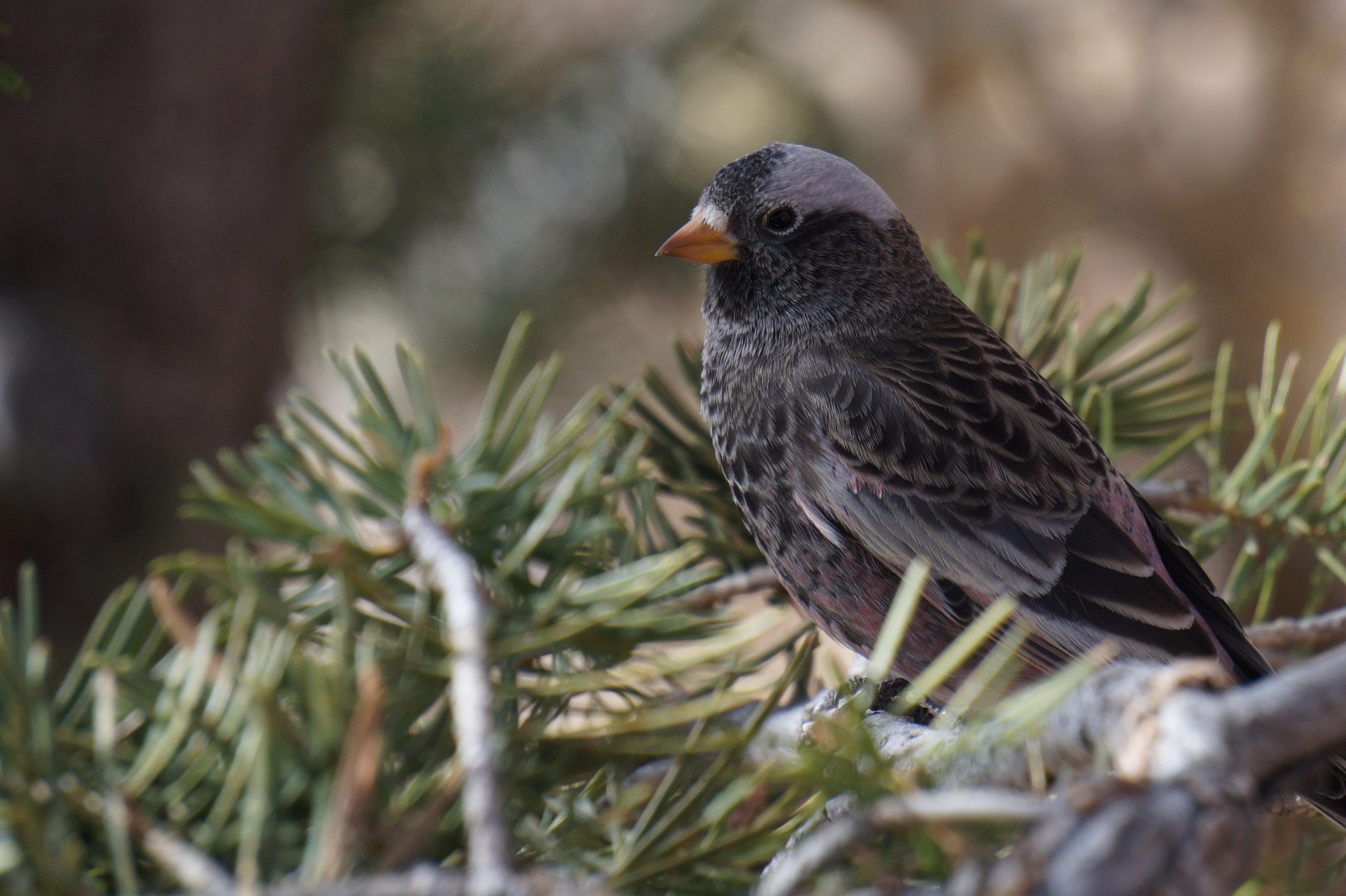Authors Matthew J. Williams and Matthew A. Young:
High in the Wind Rivers in July of 2019, I (Matt Williams) heard and saw Black Rosy-Finches for the first time on their breeding grounds. My feet were at an elevation of nearly 10,800 feet and the granite Temple Peak (pictured below) rose nearly 2,200 feet above. The terrain is stunning but also very intimidating to those of us without wings. These finches were at home. With that experience, it comes as no surprise that Rosy-Finches hold records for North America’s highest-altitude breeding bird. Given the effort it took to (almost) reach their breeding sites, it also is not shocking that they are among the least-researched of all North American birds.
While not often directly impacted by humans, so little is known about them that we struggle to understand what changing climate will do to their breeding grounds, the snowpack, the vegetation and insects they feed on, as well as their populations. Projections are dire for these and many other species that may find their “goldilocks zone” ascend right off the top of the mountain as the climate warms. Their physical nest sites, often in hollows in rock cliffs and talus won’t likely change much but the complex and fragile alpine ecology that these birds rely on could be altered significantly and permanently.
Intrepid mountaineer-ornithologists like Carl Brown of Wyoming (Featured in this Audubon Article) have managed to conduct some impressive studies shedding new light on breeding ecology and behavior. The unique skills and specialized equipment required to access nesting sites makes this research challenging and expensive. These are lovely birds but their faraway habitats and unpredictable winter wanderings often place them out of sight and out of mind when it comes to public awareness and research funding.
Recognizing these challenges, the Wild Utah Project and researchers from Utah State University’s Ecology Center and several other partners are conducting The Rosy-Finch Project – research aimed at gathering population-level data from wintering flocks at RFID feeders in the Wasatch Mountains. This technology can detect and identify RFID-tagged birds even when nobody is watching. This project also includes a cadre of volunteers counting at feeders across the west to help develop a clearer picture of Rosy-Finch range, behavior, and population dynamics. By coupling this data with other historical and current research including eBird and Audubon’s Christmas Bird Count data, hopefully a better understanding of these three species will emerge.
The Finch Research Network is excited about collaborating on this project We’re in the beginning stages of being part of a Rosy-Finch working group, and this will be the third finch group that will be the focus in North America (the other two will be the Red Crossbill and Evening Grosbeak complexes). Over the coming months and years we plan to fundraise for this project to help support Wild Utah and other organizations protect Rosy-Finches, and any support received will be greatly appreciated!
So, if you find yourself in Rosy-Finch range, have a bird feeder to watch and could learn to recognize a Rosy-Finch if you saw one, please join in and contribute to this research, adding pieces to the puzzle of these alpine finches and their uncertain future.
Cover Photo Credit Jack Parlapiano
FiRN is a nonprofit, and has been granted 501c3 status. FiRN is committed to researching and protecting these birds and other threatened finch species like the Evening Grosbeak and Rosy-finches, and if you have been enjoying all the blogs and identifying of Red Crossbill call types, redpoll subspecies and green morph Pine Siskins FiRN has helped with, please think about supporting our efforts and making a small donation at the donate link below.
Read more about Rosy-Finches:

